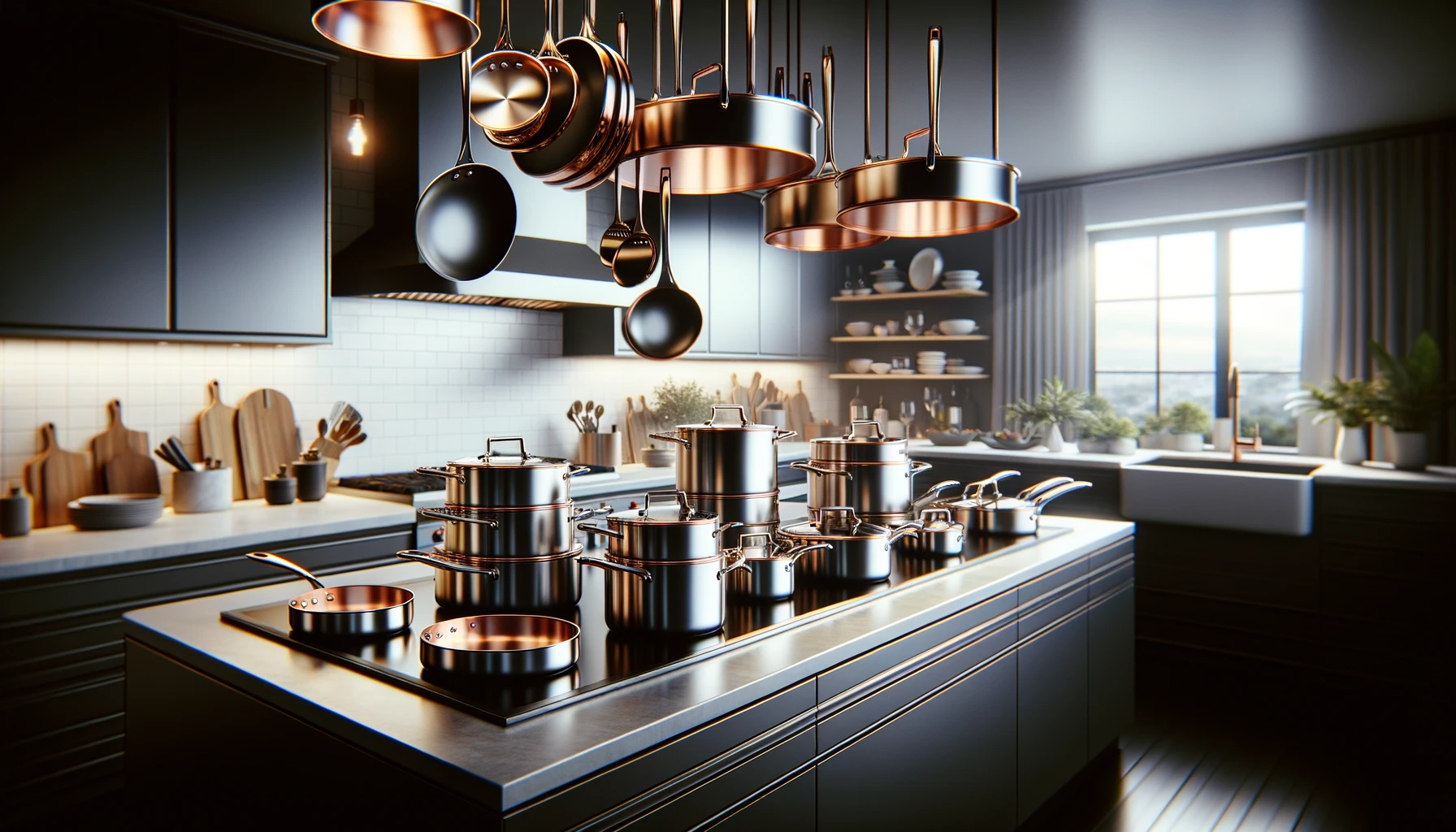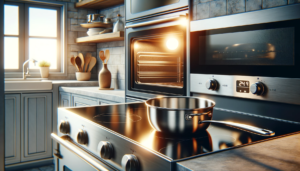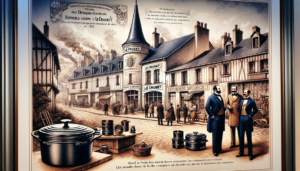Is All-Clad’s premium cookware really worth upwards of $500 per pan?
All-Clad stands atop the home cookware world for its innovative metal bonding construction that enables unparalleled heating consistency and control.
But with high prices come questions around true value beyond cheaper alternatives.
Let’s dive in and unpack the performance and cost considerations around All-Clad’s product lines to determine if this luxury brand warrants its lofty reputation.
What’s the Difference Between All-Clad Lines & Is It Worth It?

The core differences across All-Clad’s product lines come down to the metals used, with higher grade stainless steel and copper yielding superior heating responsiveness & precision.
But with better performance comes higher prices, sometimes $500+ per pan.
Ultimately All-Clad’s value depends on your budget and cooking habits.
Frequent cooks find the quality and durability warrant the cost while casual chefs are better off with cheaper options.
Below we’ll analyze in detail the construction, performance, and pricing across All-Clad’s collections to better assess the differences and determine if this iconic cookware brand justifies its reputation.
All-Clad’s Main Lines
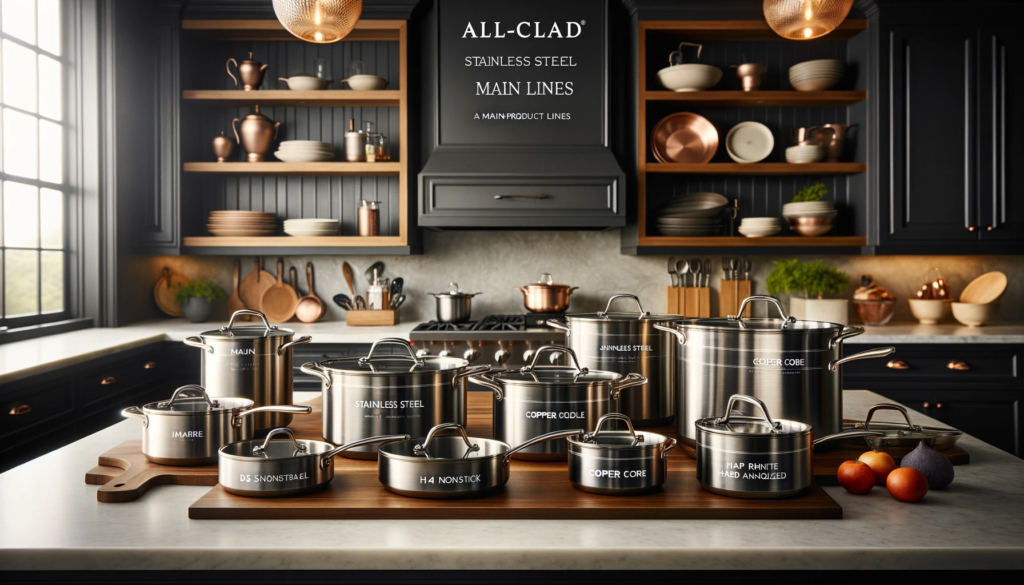
All-Clad offers several lines of premium multi-clad stainless steel cookware.
The main product lines are the All-Clad Stainless Steel, All-Clad D5 Stainless Steel, All-Clad Copper Core, All-Clad HA1 Nonstick, and All-Clad B1 Hard Anodized.
Each line is constructed from different materials and engineered for distinct cooking performance.
Understanding the variations can help buyers select the optimal All-Clad cookware for their needs and budget.
Key Differences Between the Lines
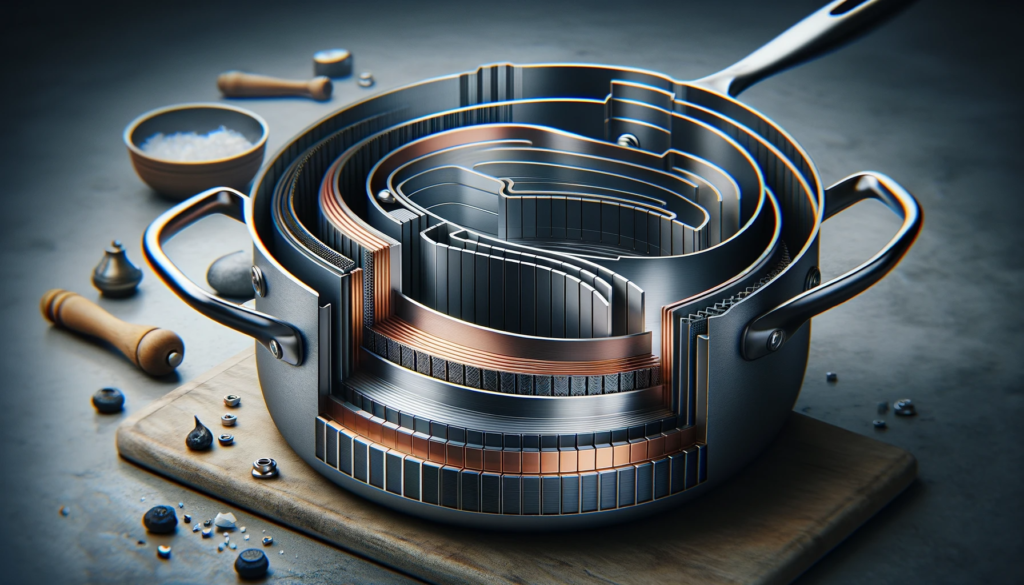
All-Clad’s renowned cookware lines showcase the brand’s signature innovation – proprietary bonding of stainless steel, aluminum, and copper for unrivaled heating efficiency.
But not all All-Clad pans are created equal.
The type of metals used, interior coatings, number of layers, and other construction elements distinguish the product offerings and account for variance in performance and price points.
Understanding these key differences provides the basis for determining the best All-Clad cookware line aligned to cooking needs and budget.
We will analyze the unique composition of each key collection and how this impacts overall functionality.
Construction Materials
The foundation of All-Clad’s cookware is its patented stainless steel bonding construction which clads layers of stainless steel around an aluminum or copper core.
The type of stainless steel used, interior coatings, and core material differ across the product lines.
The All-Clad Stainless collection uses a three-ply construction.
The exterior and interior layers are 18/10 stainless steel.
In between is an aluminum core bonded to the stainless layers.
The D5 line also features a three-ply build.
However, the stainless steel used is a higher grade – 18/10 stainless with five alternating layers of titanium and stainless steel.
The result is enhanced corrosion resistance.
D5 cookware weighs slightly more than standard All-Clad offerings.
Both collections have stainless steel cooking surfaces.
All-Clad’s Copper Core series is a five-ply construction, with interior and exterior layers of 18/10 stainless steel.
It contains an interior core of pure copper, prized for superior heat conductivity.
The copper is bonded to two aluminum cores – one above and one below.
This unique layering helps prevent hot spots while allowing rapid heating.
The exterior of Copper Core pans is visibly distinct from other All-Clad lines, displaying a copper-hued ring.
The Nonstick HA1 line has an 18/10 stainless exterior while the interior cooking surface is brushed aluminum coated in PFOA-free nonstick.
This allows low-fat cooking and easy food release.
The Hard Anodized B1 line is constructed differently than All-Clad’s stainless collections.
It has a black, anodized aluminum exterior that is durable and won’t react with acidic foods.
The cooking surface is a rugged, nonstick coating.
Performance Characteristics
The material composition of All-Clad pans directly impacts their heating properties during cooking.
Factors like thermal conductivity, evenness of heating, and hot spot resistance vary across the product offerings.
Stainless steel is prized for its durability but conducts heat slower than other metals.
The aluminum core in most All-Clad pans helps address this.
Of All-Clad’s stainless options, the D5 LINE offers superior heating conductivity and evenness due to its higher grade steel.
Copper is the best heat conductor, making the Copper Core line unmatched for responsiveness, precision cooking, and eliminating hot spots.
Nonstick sets cater to low-fat cooking needs rather than high heat performance.
But All-Clad’s HA1 still offers relatively even heating for gentler cooking techniques.
Anodized aluminum in the B1 LINE also allows relatively fast and even heating.
But it is outperformed by All-Clad’s bonded metal constructions.
Beyond heating efficacy, the longevity and ease of maintaining cookware play a role in performance.
All-Clad’s stainless steel offers exceptional durability, allowing the pans to withstand decades of regular cooking.
The nonstick sets will show wear over several years.
All-Clad stainless interiors should not be washed with harsh chemicals or abrasives.
While safe for dishwashers, hand washing is recommended for longest life.
The simple, steel surfaces require little special maintenance otherwise.
Exteriors are scratch-resistant.
Nonstick interiors are more delicate and susceptible to degrading over time.
Durability varies based on quality of the nonstick coating.
Storage and cooking precautions help prolong nonstick viability.
Cost Breakdown
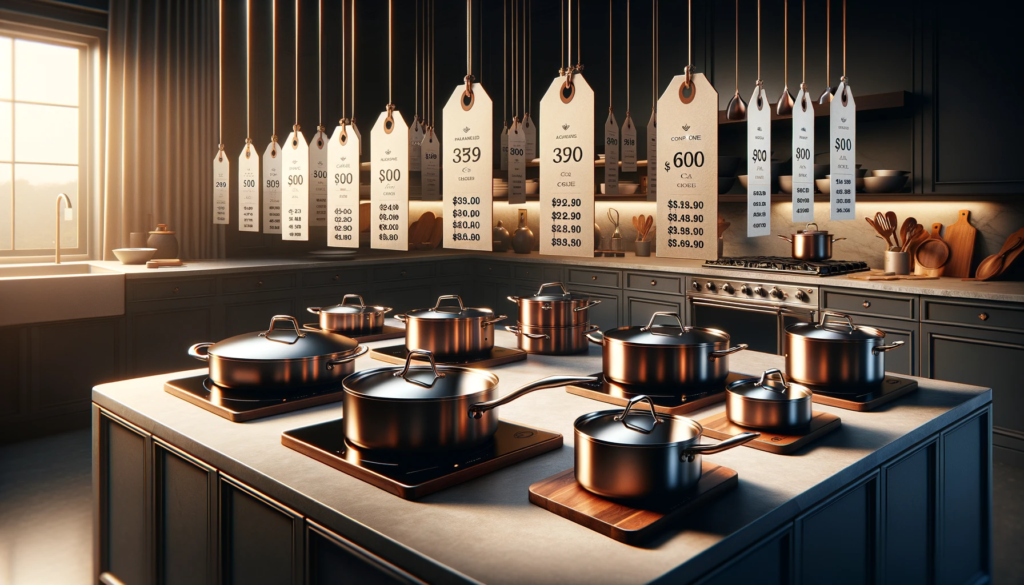
Pricing for All-Clad pans varies greatly based on materials and construction quality.
As expected, performance merits higher price tags.
But All-Clad does offer lower-cost options alongside its premium collections.
The Hard Anodized B1 line is All-Clad’s most affordable, targeted at entry-level buyers wanting basic quality at a reasonable cost.
Pieces range from $50 to $250 for larger cookware.
While less expensive than other All-Clad offerings, B1 still carries a price premium over cheap imported aluminum cookware.
But material integrity and product support justify the extra expense for many buyers.
The standard All-Clad Stainless line is considered an intermediate option with cookware ranging from around $100 to $700 depending on size and styling.
Significant savings can be found with All-Clad factory seconds, pieces with minor cosmetic defects that meet the company’s performance standards.
Discount sets like these make All-Clad more budget-friendly for some buyers.
Other products meant to provide affordable entry points are All-Clad’s stainless offerings made in China rather than the USA.
Quality is still decent but below All-Clad’s usual benchmark.
At the higher end of All-Clad’s offerings are the D5, Copper Core, and specialty cookware lines – including chef-collaboration pieces.
Per-piece prices go up to almost $500.
Complete sets exceed $1,000 or even $2,000.
The ultra premium All-Clad Copper Cristal line designed by chef Alain Ducasse costs over $3,000 for an 11-piece set.
Are All-Clad Pans Worth the Money?
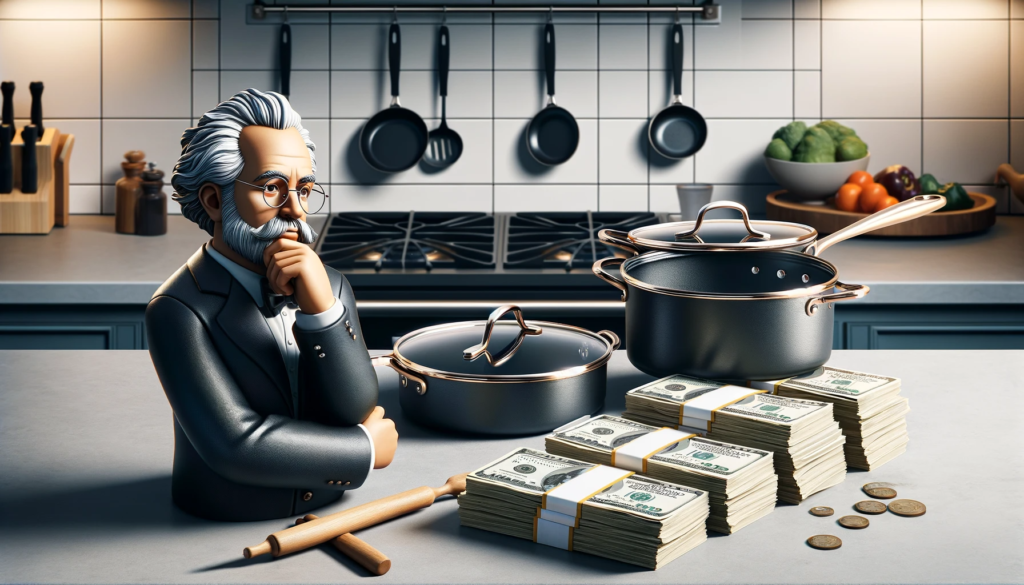
With premium prices come expectations of commensurate performance and value.
All-Clad is renowned for quality craftsmanship.
But opinions differ on whether the renowned cookware justifies its luxury cost.
Benefits
All-Clad’s biggest selling point is unmatched heating efficiency and precision.
The proprietary metal layering offers unrivaled consistency, responsiveness, and control – vital for delicate cooking.
Food preparation is easier and cleaning made simpler thanks to the non-porous stainless interiors that won’t react with ingredients.
Alongside heating technology, All-Clad users praise these pans’ durability and longevity.
With proper care, the stainless and anodized models can serve reliably for decades.
This contrasts much cheaper cookware with limited life spans.
All-Clad offers a lifetime warranty backing its products’ staying power.
Though expensive initially, the long-term functionality helps justify costs through years of use.
All-Clad’s American manufacturing facilitates quality control and material sourcing regulations unmatched overseas.
And the distinctive styling with polished stainless, etched logos, and streamlined design gives the cookware an elegant, timeless aesthetic at home in both traditional and modern kitchens.
This versatility makes All-Clad a sound investment less susceptible to eroding style trends.
Drawbacks
The most frequent criticism of All-Clad pans is their premium pricing that puts complete sets out of reach for many buyers.
With cheaper cookware abundantly available, reasonable consumers may question needing such expensive alternatives that chef less efficiently.
This price sensitivity must be weighed based on individuals’ budgets and cooking demands.
Related to high costs, All-Clad pans weigh significantly more than typical cookware, owing to their durable metals and robust construction.
This makes the pots and pans exhausting for those challenged lifting heavier weights.
And paired with higher prices, hefty products become impractical for some buyers despite All-Clad’s virtues.
While All-Clad stainless steel requires little special maintenance, hand washing is recommended over harsh dishwasher chemicals that can degrade exterior polish and finishes over time.
This modest extra effort is unappealing to those wanting completely care-free kitchenware.
Some users also express disappointment with All-Clad’s warranty, claiming the company is unwilling to suitably repair or replace damaged items despite its lifetime guarantee.
This muddies the value proposition around quality and long-term investment.
Longterm Value Assessment
The core question around All-Clad’s value is whether the advanced performance, enduring quality, and intangible appeal merits the steep initial splurge beyond cheaper (but shorter-lived) alternatives.
For infrequent cooks doing basic meal prep, elaborate All-Clad sets offer needless luxury with minimal return on investment.
This consumer would see better cost efficiency and adequate quality with entry-level anodized aluminum cookware from affordable brands.
But for cooking enthusiasts utilising high-end cookware routinely, All-Clad makes a compelling case for value efficiency on a per-use basis.
Assuming 10 years of regular stove-top usage across an initial $1,000 All-Clad set, the yearly cost averages to $100.
This equals just $8 monthly, and even less per individual use.
Considering gourmet meals enabled by All-Clad’s heating precision, this cost seems far more reasonable.
And should an All-Clad owner ever cease cooking or look to upgrade cookware, the durable sets retain decent resale value on secondary markets compared to flimsier mainstream competitors.
This ameliorates some initial purchase costs.
Conclusion
In the end, a buyer’s unique financial means and at-home culinary ambition determines whether iconic All-Clad cookware merits the money.
For serious home gourmets, the quality and endurance probably justify the premium.
More casual cooks find better budget optimization with cheaper sets despite All-Clad’s renown.
Determining this value threshold remains highly personal.
